Innovation in Sustainable Design
LEED: Leadership in Energy and Environmental Design
LEED is the primary used green sustainability standards rating system used in the world. There are LEED standards available for all building types including commercial, community, and residential. LEED certification is acknowledged worldwide as a symbol of healthy, energy efficient, and healthy buildings.
Western Kentucky University has made the commitment to move toward a more sustainable and healthy campus by building and renovating seven LEED certified buildings.
WKU was one of nine colleges and universities honored with the inaugural U.S. Department of Education Green Ribbon Schools Postsecondary Sustainability Award in 2015. The U.S. Department of Education Green Ribbon Schools award honors public and private K-12 schools and post-secondary institutions that are exemplary in three standards:
Reduced Environmental Impacts and Costs; Improved Health and Wellness; and Effective Environmental and Sustainability Education.
WKU LEED Certified Buildings
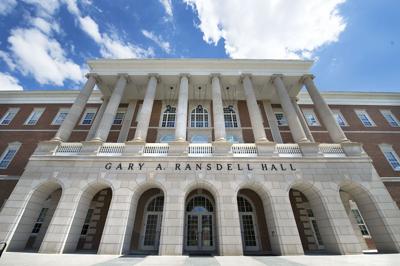
The WKU Board of Regents named the new College of Education the name The Gary A. Ransdell College of Education in 2009. This building was the first to earn Leadership in Energy and Environmental Design (LEED) Gold certification and was the first of the LEED certified buildings on campus.
Some of the important credits required for the Gold certification implemented in Gary A. Ransdell Hall include the following:
- low emitting (VOC) adhesive, paints, carpets, and furnishings for improved air quality
- recycled content and regional materials
- optimized energy performance
- reflective coating on roof and parking lots for a reduction in heat island effect
- bicycle storage and changing rooms
- access to public transportation
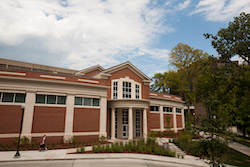
Music Hall’s renovation was completed in 2010, granting WKU a second LEED Gold certification. Upon completion of the project, energy performance was 24% better than average building performance. 75% of construction waste was recycled or salvaged, and there was a 35% reduction in water consumption.
The following strategies were implemented to earn the Gold certification:
- installation of an aggressive stormwater management system that uses a 40,000- gallon aquifer beneath the building’s driveway to treat storm water due to the building location being on a karst site.
- low-plumbing fixtures in use to minimize water consumption
- low emitting (VOC) construction materials used to protect the air quality
- bicycle commuter shower installed
- windows placed for maximum daylight infusion into the building
- installation of a white roof to reduce the heat island effect
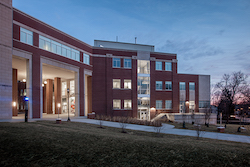
Ogden College Hall was Western's third building to earn LEED Gold status. Ogden College Hall boasts an 80,00 square foot complex with 36 laboratories for the departments of Chemistry, Physics and Biology; a 300-seat auditorium, student success center and student lounges; and the Dean’s Suite for the Ogden College of Science and Engineering.
OCH won the Shaw Design People's Choice Award for beautifully and intelligently integrating a "Science on Display" theme throughout the space.
Elements used in earning the Gold certification included many of the following:
- optimized energy performance
- enhanced refrigerant performance
- thermal comfort design
- responsible construction waste management
- recycled content
- use of regional resources
- low-emitting (voc) construction materials
- development density and community connectivity
- public transportation access
- water efficient landscaping
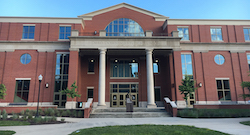
Renovation and expansion of the Downing Student Union earned Western Kentucky University a Silver LEED certification while also creating a space that was more conducive to student activities. One challenge to the project was keeping portions of the building open throughout the construction process. DSU gained an added square footage to become 250,000 of space to be used by students, faculty, and visitors. Both structural and cosmetic changes were necessary to complete the two year-long project. Upon completion, the building earned a LEED Silver certification using the following strategies:
- complete update of the electrical, plumbing, HVAC, and IT infrastructure
- modernization of the dining facilities
- modernization of offices
- improved water efficiency
- low emitting (VOC) construction materials
- white roof to decrease the heat island effect
- water bottle refilling stations
- automatic lighting for rooms unoccupied
- energy efficient windows to include ventilation and passive solar heating
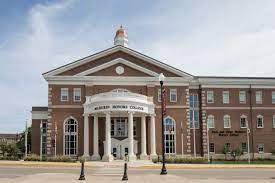
The Honors College International Center was built to LEED standards upon its construction in 2009.
Elements used in earning the Silver certification included many of the following:
- optimized energy performance
- enhanced refrigerant performance
- thermal comfort design
- responsible construction waste management
- recycled content
- low-emitting (voc) construction materials
- water use reduction
- reflective coating on roof and parking lots for a reduction in heat island effect
- alternative transportation- bicycle storage and changing rooms
- water efficient landscaping
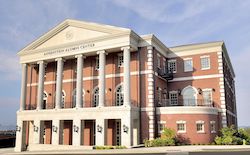
The Augenstein Alumni Center gives a space for alumni groups to meet, as well as artifacts showing life at WKU throughout the decades to be on display. The building received a LEED certification due to all the energy saving measures and green measures used in the construction process. Although not a Gold or Silver certification, a LEED certification continues to show the commitment of Western Kentucky University becoming more of a sustainable environment each year.
Features used in the Augenstein Center include the following:
- sinks include low-flow faucets that help conserve water and save on power bills
- light bulbs are low- emitting to save energy
- windows are highly efficient, insulated, double-glazed panels in thermally broken clad wood frames
- recycled or reused construction materials
- high efficiency HVAC units
- public transportation access
- water efficient landscaping
- green power
- thermal comfort design
- innovation in design

Since its original construction in 1931 as the Health & Physical Education Building, this facility has continually evolved to meet the changing needs of our university community. Originally home to a 5,000-seat gymnasium, it was repurposed in 1965 as Margie Helm Library, serving as a cornerstone for academic research. Now, in its third major transformation, it has been renovated and reimagined as The Commons at Helm Library--an intellectual hub where students, faculty, and staff come together to collaborate and engage in active learning. By repurposing rather than replacing, this facility stands as a testament to the sustainable reuse of existing spaces--preserving history while advancing innovation for future generations. This latest renovation earned a Silver LEED certification through strategies such as:
- a 47% reduction in indoor water use
- optimized energy performance
- enhanced refrigerant management
- advanced energy metering
- responsible construction waste management
- improved indoor air quality
- material transparency
- collaboration with a LEED-accredited professional

